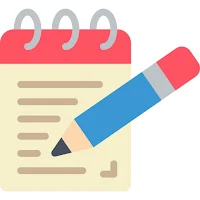Hyphens
Introduction
Hyphens are small but mighty tools in the realm of writing, crucial for clarity and precision. Whether you're a student refining an essay, a professional drafting a report, or a casual writer crafting an email, mastering the use of hyphens can significantly improve your written communication. Hyphens serve multiple purposes: they join words, divide them at the end of a line, and clarify compound terms. This guide will help you understand when and how to use hyphens, ensuring that your writing is both accurate and easily understood by your readers.
When to use hyphens?
Use a hyphen to divide a word at the end of a line.
A hyphen (-) tells a reader that a word you began on one line will continue on the next line. Hyphens should be used only between the syllables of a word.
EXAMPLE
- After playing for an hour, the chess players reached a stale-
mate. [Stalemate divides into two syllables, stale-mate. The hyphen belongs between the two syllables.]
NOTE
Do not hyphenate a word that has only one syllable. Also, do not leave a letter standing alone when you divide a word.
INCORRECT
- When we arrived, the play was just a-
bout to start. [The word about divides into two syllables, a-bout. However, the a by itself is awkward.]
CORRECT
- When we arrived, the play was just
about to start. [The whole word about goes on the second line because it cannot be divided.]
If you aren’t sure whether a word is two or more syllables, check a dictionary. Dictionaries show exactly where words divide into syllables.
Some words are always hyphenated. Use hyphens with the following: compound numbers from twenty-one to ninety-nine; fractions used as modifiers; the prefixes ex–, self–, all–, and great–; the suffixes –elect and –free; prefixes before proper nouns and adjectives; and compound adjectives that precede the nouns they modify.
EXAMPLES
- Pedro planted twenty-six trees in the park. [Twenty-six is a compound number.]
- The recipe calls for one-third cup of chopped chives. [The fraction one-third is used to modify cup.]
- Has Kimi been officially named treasurer-elect for next year? [Use a hyphen with the suffix –elect.]
- Most pre-Elizabethan playwrights have been overshadowed by Shakespeare. [The prefix pre– is hyphenated before a proper adjective.]
- These sturdy, well-insulated houses should be inexpensive to maintain. [The compound adjective is hyphenated because it comes before the word it modifies.]
NOTE
EXAMPLE
- These fully insulated houses should be inexpensive to maintain. [The first modifier ends in –ly, so no hyphen is needed.]
Hyphens Quiz
$$
Frequently Asked Questions (FAQs)
Q: What is a hyphen?
A hyphen (-) is a punctuation mark used to join words or parts of words. It is shorter than a dash and has specific uses in writing.
Q: Can you provide examples of hyphens in use?
- Mother-in-law
- Two-thirds
- Well-known
- Re-enter
Q: When should I use a hyphen?
Hyphens are used in several instances, including:
- Compound Words: To join two or more words that function together as a single concept (e.g., "mother-in-law").
- Numbers: To connect numbers and words in certain contexts (e.g., "twenty-one").
- Prefixes/Suffixes: When adding a prefix to a word that starts with the same letter (e.g., "re-enter") or to clarify meaning (e.g., "co-worker").
- Avoiding Ambiguity: To make the meaning of a sentence clearer (e.g., "re-cover" vs. "recover").
- Line Breaks: To divide a word at the end of a line of text.
Q: What is the difference between a hyphen and a dash?
A hyphen is a short mark (-) used to join words or parts of words. A dash comes in two forms: the en dash (–) and the em dash (—). They serve different purposes than hyphens.
- En Dash (–): Slightly longer than a hyphen, it is used to show ranges (e.g., "pages 5–10") or relationships (e.g., "New York–London flight").
- Em Dash (—): The longest of the three, it is used to create a strong break in a sentence (e.g., "She gave him her answer—no.").
Q: Can you provide some examples of words that commonly use hyphens?
Certainly! Here are some examples:
- Self-esteem
- Part-time
- Post-office
- User-friendly
- Editor-in-chief
These examples illustrate how hyphens can be used to form compound words, clarify meaning, and connect prefixes or suffixes to root words.
Conclusion
Hyphens may be tiny, but their role in writing is substantial. They help clarify connections between words, break lines gracefully, and ensure compound terms are easily understood. By mastering the use of hyphens, you can enhance the readability and professionalism of your writing, whether you're working on academic papers, business documents, or casual correspondence. Keep these tips in mind, and you'll find that hyphens are invaluable tools in your writing arsenal.



